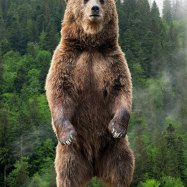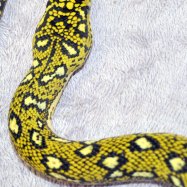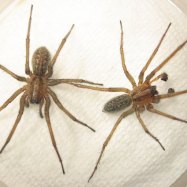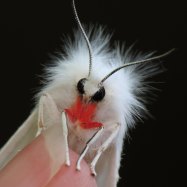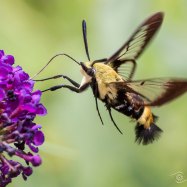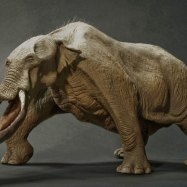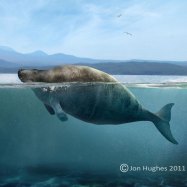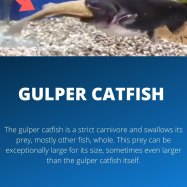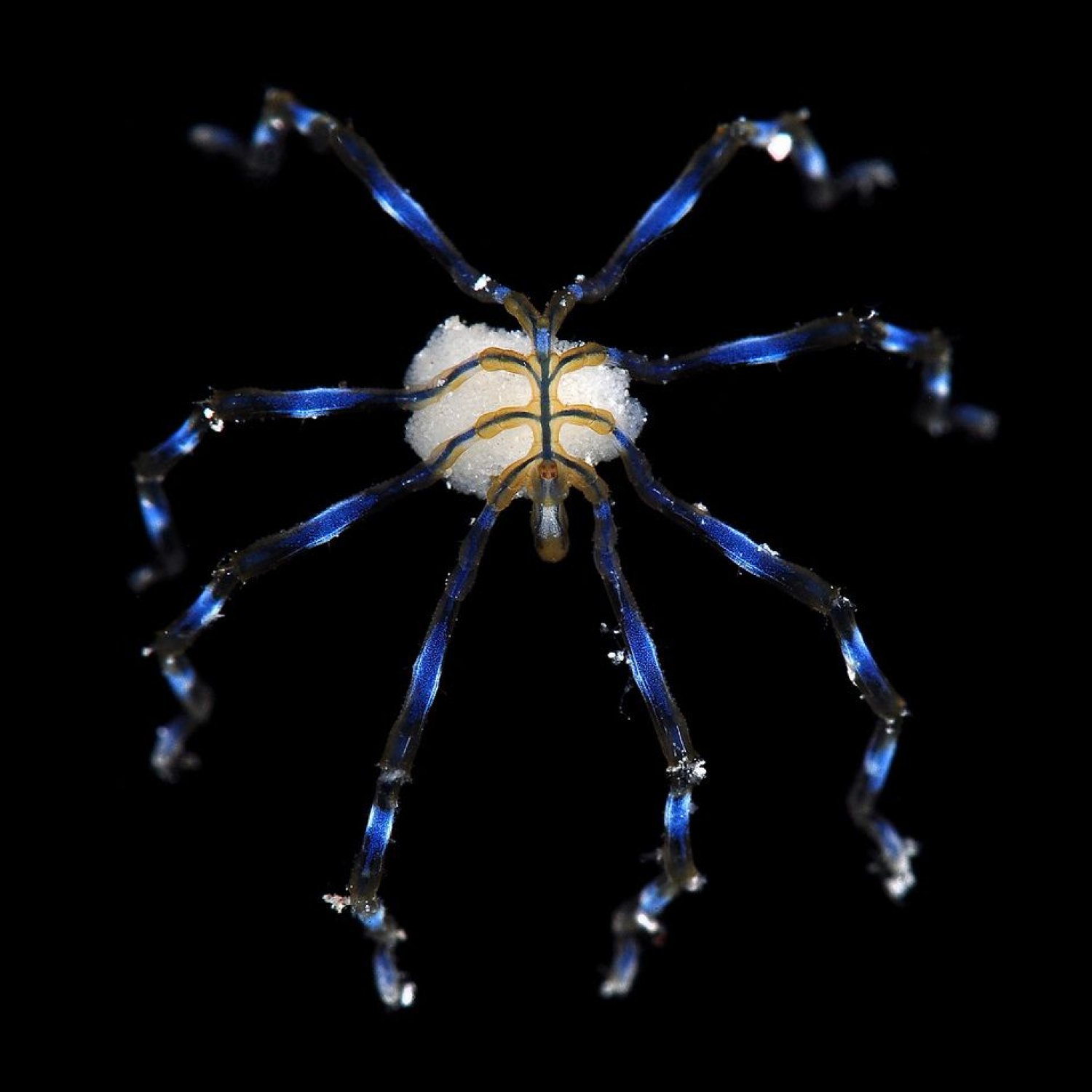
Sea Spider
Up to 10 cm
Sea spiders may look like actual spiders, but they are actually a type of marine arthropod found in oceans and seas. These creatures are small, with a body size of up to 10 cm. Despite their name, they are not true spiders and belong to various families. Their long, thin legs allow them to navigate the ocean floor and capture prey. Keep an eye out for these fascinating creatures on your next dive! #SeaSpider #MarineLife #OceanLife
Animal Details Summary:
Common Name: Sea Spider
Kingdom: Animalia
Habitat: Marine
The Mysterious Sea Spider: A Marvel of Adaptation and Survival
The deep, dark waters of the world's oceans hold many secrets and mysteries, one of which is the sea spider. This strange and fascinating creature, also known by its scientific name Pycnogonida, is a type of marine arthropod that belongs to the class Pycnogonida, commonly referred to as sea spiders.Despite their name, sea spiders are not actual spiders and do not have the typical characteristics of spiders such as fangs or silk-spinning abilities. They have a unique body structure that sets them apart from other marine creatures and makes them a subject of interest for scientists and divers alike Sea Spider.
The Sea Spider's Kingdom, Phylum, and Class
The sea spider belongs to the Kingdom Animalia, which includes all animals. It is classified under the Phylum Arthropoda, which means "jointed legs," and includes animals with segmented bodies and jointed legs, such as insects, crustaceans, and arachnids. The sea spider belongs to the class Pycnogonida, derived from Greek words "pyknos" meaning "dense" and "gonia" meaning "angle," describing their compact body shape with numerous angles.A Unique Order and Family
Within the class Pycnogonida, the sea spider belongs to the order Pantopoda, meaning "all feet." This name is aptly given as sea spiders have a remarkable number of legs compared to other animals. They can have anywhere from four to eight pairs of long, thin legs that they use for walking, swimming, and capturing prey.The family of sea spiders is a diverse one, with over 1,300 species that vary in size, color, and adaptations. These species are further categorized into eight families, each with its unique traits and characteristics.
Where Can You Find Sea Spiders?
Sea spiders can be found in all oceans and seas worldwide, from the shallowest coastal waters to the deepest depths of the ocean Samoyed. They primarily live in benthic zones, which are areas on the ocean floor. Some species can also be found in freshwater, such as lakes and rivers.Adaptations for Life in the Ocean
One of the most notable adaptations of sea spiders is their unique body shape and size. They have a small body, usually less than 10 cm in length, and a disproportionately large head. Their long, thin legs are their defining feature, measuring several times the length of their body.These creatures have a soft, flexible exoskeleton, which allows them to squeeze through tight spaces and hide in crevices on the ocean floor. Their exoskeleton also protects them from potential predators, as they do not have any other defenses such as sharp claws or venom.
Their legs are an essential adaptation for sea spiders, used for hunting, feeding, and also respiration. Sea spiders do not have any respiratory organs, so they rely on the diffusion of oxygen through their bodies, facilitated by their long, thin legs.
Carnivorous Feeding Method
Sea spiders are carnivores, which means they eat other animals. They have a proboscis, a sharp structure located below their head, which they use to pierce and suck their prey's soft tissues. Their diet includes a variety of small marine creatures such as anemones, corals, worms, and even other sea spiders.A Colorful Array
The coloration of sea spiders can vary from species to species and even within the same species. Some have striking colors such as bright red, orange, or blue, while others are more subdued in shades of brown and gray. The purpose of their coloring is still a mystery, but some scientists speculate that it could be a form of camouflage or a way to attract mates.The Fascinating Reproduction Process
One of the most intriguing features of sea spiders is their unique way of reproducing. The female sea spider carries her eggs in a specialized sac on her body until they hatch into larvae. These larvae resemble tiny sea spiders and go through several stages of development before reaching adulthood.Interestingly, male sea spiders lack a specialized organ for reproduction and instead transfer their sperms into a specialized limb of the female. The female then carries the sperms with her until she is ready to fertilize her eggs.
The Importance of Sea Spiders in the Ecosystem
Sea spiders may be small and often overlooked, but they play a crucial role in the marine ecosystem. Their diet includes various smaller marine creatures, keeping populations in balance, and preventing overpopulation of certain species. They also serve as a vital link in the food chain, providing food for larger predators.Their unique body structure and adaptations also make them an interesting subject for scientific research. Studying sea spiders can provide valuable insights into the evolution and adaptation of marine life, as well as the effects of climate change on ocean ecosystems.
The Impact of Human Activity on Sea Spiders
As with most marine creatures, sea spiders are facing threats from human activity such as pollution, overfishing, and habitat destruction. Due to their small size and relatively unexplored habitat, the full extent of the impact of these activities on sea spiders is yet unknown. However, it is essential to preserve the oceans and their inhabitants to maintain a healthy ecosystem and protect these fascinating creatures.In Conclusion
The sea spider may not be as famous or well-known as other marine creatures such as sharks or dolphins, but it is undoubtedly a marvel of adaptation and survival. From their unique body structure and adaptations to their important role in the ecosystem, these creatures are a testament to the diversity and wonders of the ocean.Despite the mysteries that still surround them, sea spiders continue to fascinate and capture the attention of researchers and nature enthusiasts worldwide. As we continue to explore and learn more about our oceans, we can hope to unlock the secrets and marvels of these extraordinary creatures and protect them for generations to come.

Sea Spider
Animal Details Sea Spider - Scientific Name: Pycnogonida
- Category: Animals S
- Scientific Name: Pycnogonida
- Common Name: Sea Spider
- Kingdom: Animalia
- Phylum: Arthropoda
- Class: Pycnogonida
- Order: Pantopoda
- Family: Various
- Habitat: Marine
- Feeding Method: Carnivorous
- Geographical Distribution: Worldwide
- Country of Origin: N/A
- Location: Oceans and Seas
- Animal Coloration: Varies
- Body Shape: Small body size with long, thin legs
- Length: Up to 10 cm
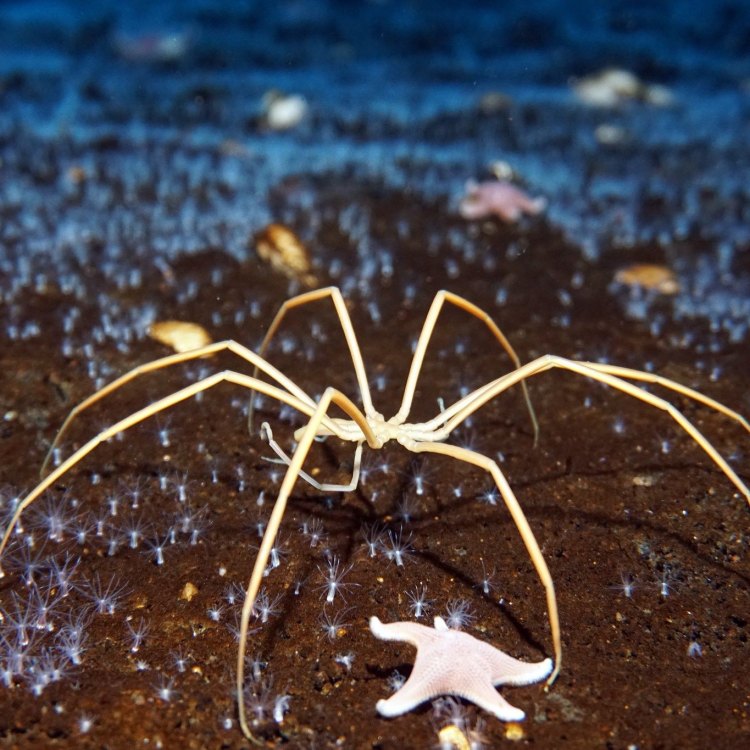
Sea Spider
- Adult Size: Varies
- Average Lifespan: 1-2 years
- Reproduction: Egg laying
- Reproductive Behavior: Male carries fertilized eggs on its legs
- Sound or Call: None
- Migration Pattern: N/A
- Social Groups: Solitary
- Behavior: Slow-moving
- Threats: Predation, habitat destruction
- Conservation Status: Not evaluated
- Impact on Ecosystem: Prey for other marine animals
- Human Use: None
- Distinctive Features: Long, thin legs
- Interesting Facts: Sea spiders are not true spiders, but a type of arthropod called pycnogonids.
- Predator: Various marine animals
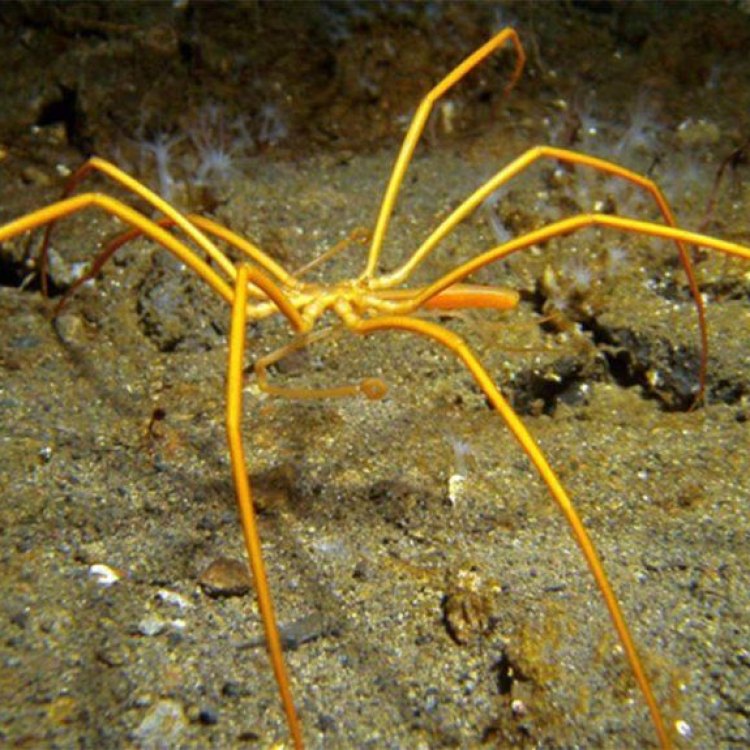
Pycnogonida
The Fascinating World of Sea Spiders
When we hear the word "spider," we often think of the creepy-crawly eight-legged creatures we see on land. But did you know that there are also spiders that live in the ocean? Yes, you read that right - sea spiders.Sea spiders, also known as pycnogonids, are a unique group of marine arthropods that roam the ocean's depths. Unlike their land-dwelling counterparts, sea spiders have elongated bodies with slender legs, giving them an almost otherworldly appearance PeaceOfAnimals.Com. In this article, we will delve into the world of sea spiders and discover their fascinating features and behaviors.
Appearance and Size
Sea spiders come in various sizes, ranging from a tiny 0.5 millimeters to a whopping 90 centimeters in length. The variation in size depends on the species and their habitat. Some live in shallow waters, while others thrive in the deep sea, where food is scarce, and they need to grow larger to survive.What makes sea spiders stand out is their disproportionately long legs. In fact, their legs can be up to six times longer than their body. These thin legs give them a spindly appearance, making them look fragile and almost ghost-like as they move through the water.
Reproduction and Behavior
Sea spiders have a unique way of reproducing Sarcosuchus. Unlike most arthropods, they do not have specialized reproductive organs. Instead, the male sea spider carries the fertilized eggs on its legs until they hatch. Once the eggs are laid, the male sea spider's job is to protect them from predators and ensure a successful hatching. This behavior is known as "brood care" and is seen in many other marine animals, such as seahorses.Another interesting behavior of sea spiders is their slow movement. Due to their small size, they rely on currents to move around, making them appear sluggish and almost floating-like. This behavior also helps them conserve energy and saves them from using their limited oxygen supply.
Mystery of Sound and Migration
Out of all the unique and intriguing features of sea spiders, one stands out - their silence. Unlike most marine animals, sea spiders do not produce any sound or call. This behavior could be due to the fact that sound does not travel as effectively in water as it does in air.As for migration, sea spiders do not have any specific patterns or routes. They tend to stay in the same area, moving only when necessary. Some species have been found to migrate to deeper waters during winter, where the temperature is more stable. However, the exact reason for this behavior is still a mystery.
Solitary Creatures with No Human Use
Sea spiders are solitary creatures and do not form any social groups or exhibit hierarchical behaviors. They spend most of their time alone, hunting for small prey such as worms, soft corals, and sponges. They have small mouths and rely on their sharp proboscis to suck out their prey's soft tissues.Unlike their land-dwelling relatives, sea spiders do not have any significant impact on humans. They are not used for any human activities, nor are they considered a delicacy. However, they do play an essential role in their ecosystem.
Unique Features of Sea Spiders
Apart from their long, thin legs, sea spiders have some other distinctive features that set them apart from other marine animals. For one, they have an exoskeleton made up of chitin, a tough and flexible material that provides them protection and support. Their exoskeleton also helps them regulate their body fluids, making them more buoyant and reducing the risk of being swept away by currents.Interestingly, sea spiders do not possess respiratory organs. Instead, they use a unique mechanism called "cutaneous respiration," where oxygen passes through the surface of their body. This process allows them to absorb oxygen from the water, making them well-adapted to their aquatic habitat.
Myths vs. Reality: Are Sea Spiders True Spiders?
Despite their name, sea spiders are not true spiders. In fact, they are not even classified as arachnids, which is the group that spiders belong to. Instead, they are a type of arthropod called pycnogonids.One of the reasons for this misconception is that sea spiders, like spiders, have eight legs. However, there are significant differences between the two, including their body structure and respiratory system. So, no, sea spiders are not true spiders.
Threats and Conservation Status
Like many other marine animals, sea spiders face threats from predators, such as fish, octopuses, and other larger pycnogonids. They are also vulnerable to habitat destruction, caused by human activities such as bottom trawling, ocean acidification, and pollution.Currently, the conservation status of sea spiders is not evaluated. However, with increasing human activities and the impact of climate change on the oceans, these unique creatures may face threats of endangerment in the future.
Role in the Ecosystem
Despite their small size and seemingly fragile appearance, sea spiders play a crucial role in their ecosystem. As predators, they control the population of smaller marine animals, ensuring a balance in the food chain. They also serve as prey for larger marine animals, making them an essential part of the ocean's food web.Moreover, sea spiders contribute to nutrient cycling in the ocean. As they feed on small marine animals, they release nutrients back into the water, which promotes the growth of algae and other primary producers. These primary producers, in turn, provide food for other marine creatures, creating a cycle that keeps the ocean ecosystem healthy.
Conclusion
Sea spiders may not be the most well-known creatures in the marine world, but they are undoubtedly fascinating and unique. With their long, thin legs, brood care behavior, and peculiar body structure, they have carved out a niche as one of the most curious marine animals. However, with increasing threats to their habitat and the oceans in general, it is essential to protect and conserve these creatures to maintain a healthy and balanced ocean ecosystem. So, the next time you are at the beach, keep an eye out for these incredible sea spiders, and remember, they are not true spiders!
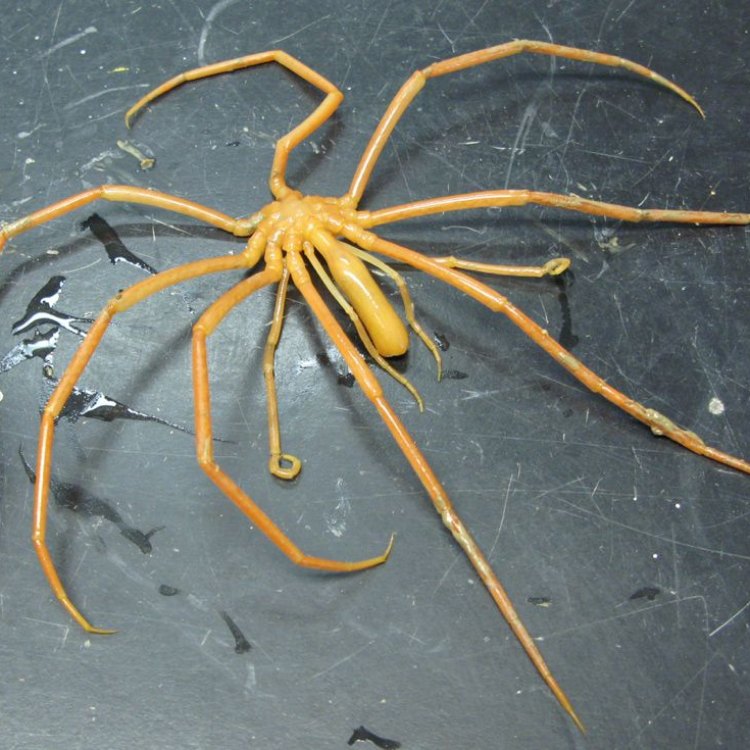
The Mysterious Sea Spider: A Marvel of Adaptation and Survival
Disclaimer: The content provided is for informational purposes only. We cannot guarantee the accuracy of the information on this page 100%. All information provided here may change without prior notice.

